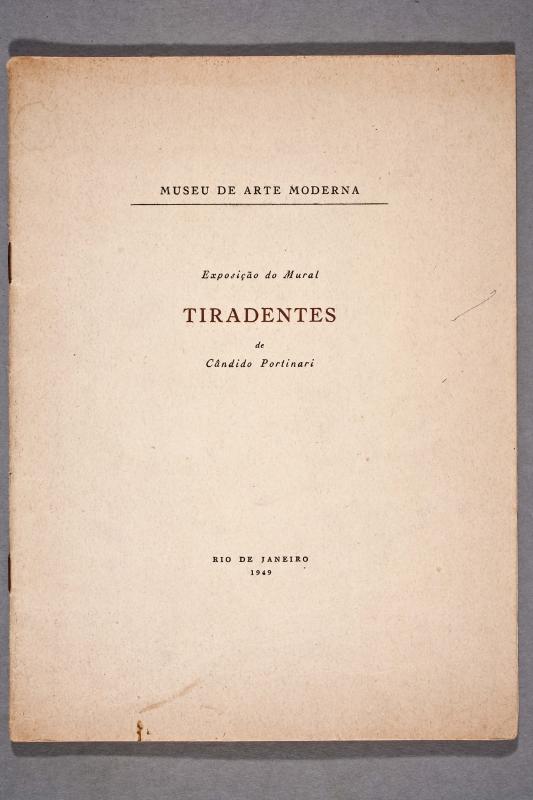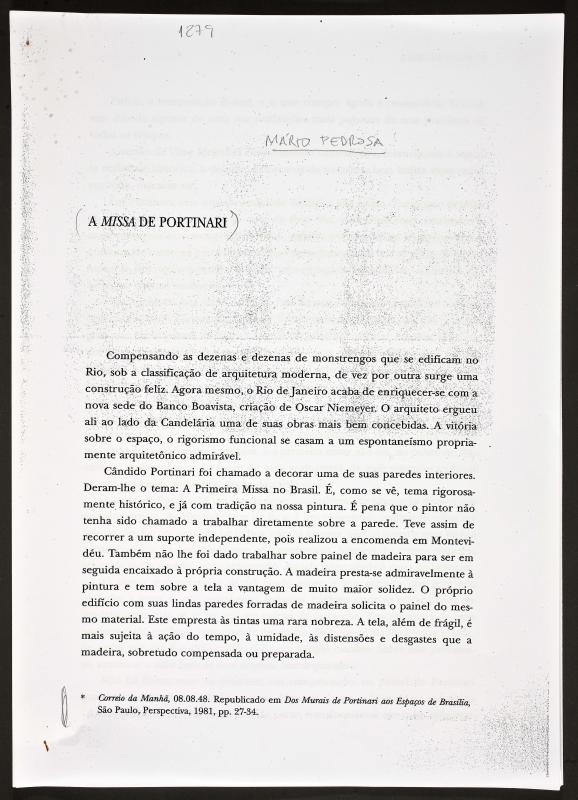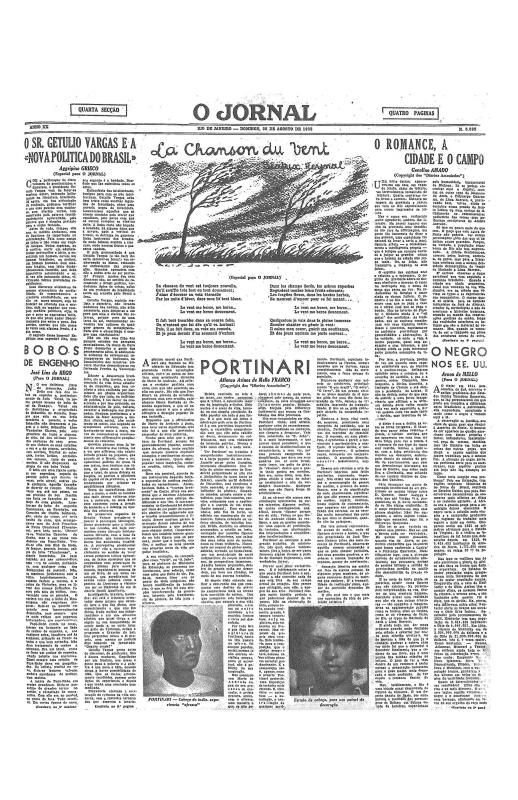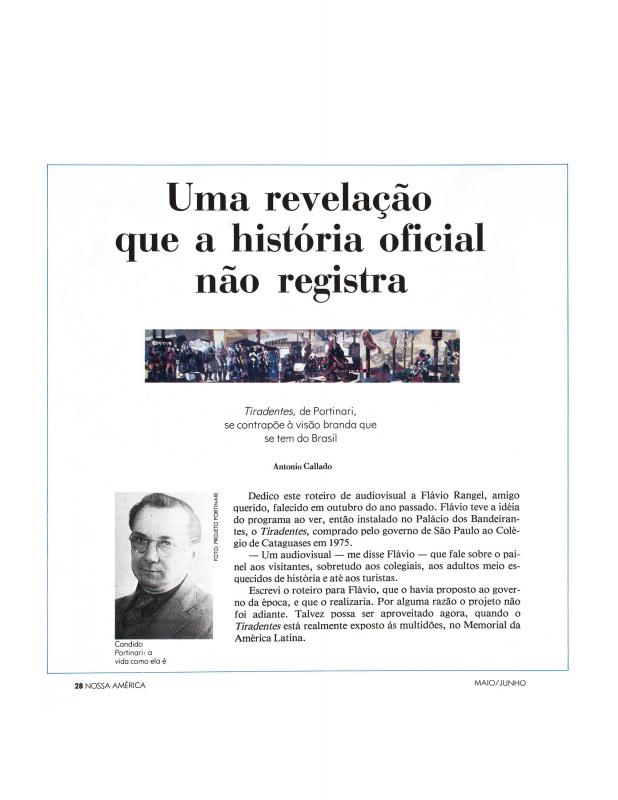The exhibition of the Tiradentes [José Joaquim da Silva Xavier (1748–92)] panel by Candido Portinari had an emblematic impact on Brazilian art. This text represents the last support that Pedrosa would offer the (figurative) artist given that a short time later he would opt for an abstract-constructivist approach with which he would reformulate his ideas of “modernity.”
Candido Portinari is a key artist in modern Brazilian art that underwent a radical shift: from a nationalism that championed native trends at the Semana de Arte Moderna (1922) to producing pictorial work that was not only nationalistic but also politicized. In the 1930s and 1950s, under the authoritarian governments of Getúlio Vargas (1930–45; 1952–55), Portinari became one of the “official” artists of modern art in the nation.
[As a complementary reading, see also in the ICAA digital archive: (untitled) [A pintura mural de autoria de Candido Portinari] (doc. no. 1110857); “A Missa de Portinari” (doc. no. 1075493); “Portinari,” by Afonso Arinos de Melo Franco (doc. no. 1110887); “Cartas de Nova York: Portinari of Brazil,” by Victor de Carvalho (doc. no. 1110888); and “Uma revelação que a história oficial não registra,” by Antonio Callado (doc. no. 1110515)].
Mário Pedrosa (1900–81) was an intellectual and politician, and undoubtedly the key theoretician and critic on Brazilian art of the 20th century. He began as an international politics correspondent for the Diário da Noite, and beginning in the 1920s he was affiliated with the PCB (Communist Party of Brazil). He was imprisoned in 1932 because of his political militancy (Trotskyism). During the Estado Novo of Getúlio Vargas, he lived in exile in France and New York, and only returned to Brazil after the Second World War, when he worked for the Correio da Manhã. His stance against Stalinism led him to found the Vanguarda Socialista, a weekly publication. He presented a thesis on aesthetics called “Da natureza afetiva da forma na obra de arte” (1949) at the School of Architecture (Rio) that made use of his philosophical background, and his knowledge of Gestalt psychology; during that time he was also one of the founders of the AICA (1948) and also organized the International Conference of Art Critics (Brasilia, 1959). He wrote an arts column for the Tribuna da Imprensa (1950–54) and was an organizing member of the II and III São Paulo Biennials (1953 and 1955), later becoming director of the MAM-SP (1961–63). He served as secretary for the National Council of Culture during the brief government of Jânio Quadros. During the military dictatorship he took refuge in Chile, where he became director of the Museo de la Solidaridad in Santiago; after the Pinochet coup (1973), he left for Havana, where he served as secretary for the Museo de la Resistencia Salvador Allende. He only returned to Brazil in 1977 (at the beginning of the amnesty) and was the first to sign the manifesto creating the PT (Party of Workers, 1980). His vast library (which included eight thousand volumes) is partially available at the national library in Rio de Janeiro.





